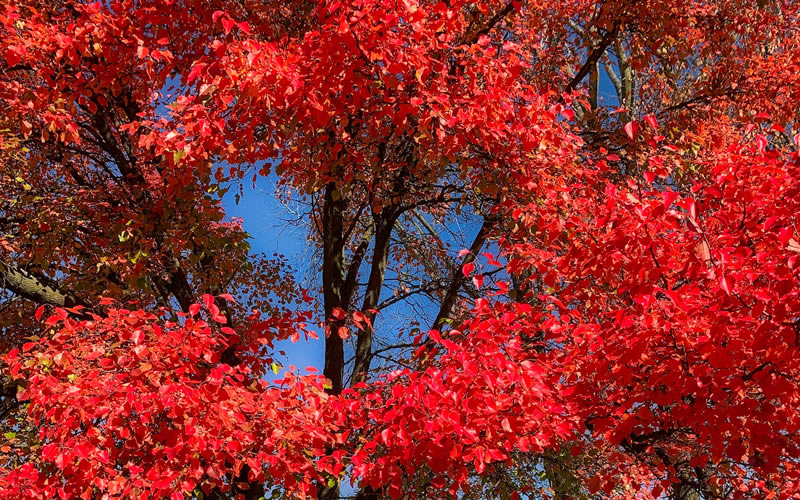Nyssa sylvatica
Growing Information
• Plant Type: Tree
• Sunlight: Full sun, part sun
• Soils: Medium to wet soils.
• Bloom Time: Small green flowers from April-May, producing a sour black fruit in fall.
• Size: 20-50 feet in height.
Spectacular fall colors and pyramidal shape. Extremely high wildlife value, as the fruits are enjoyed by birds and small mammals and the flowers are important for early spring pollinators. The fruit is edible but quite sour. This tree is a favorite of European honeybees for nesting and honey production. Slow grower and can live over 600 years.
Garden Companions
Red Maple (Acer Rubrum); Great Rhododendron (Rhododendron maximum); Mountain Laurel (Kalmia latifolia); Canada Mayflower (Maianthemium canadense); Southern Magnolia (Magnolia Grandiflora); Native ferns
Nature Benefits
• Provides nectar for native bees.
• Attracts birds and small mammals with fruit in the fall.
• Hollows in the tree are very popular nesting sites for woodpeckers, owls, small mammals, and honeybees.
Natural Habitat
Moist deciduous forests and swamps. Occasionally tolerant of drier sites.

